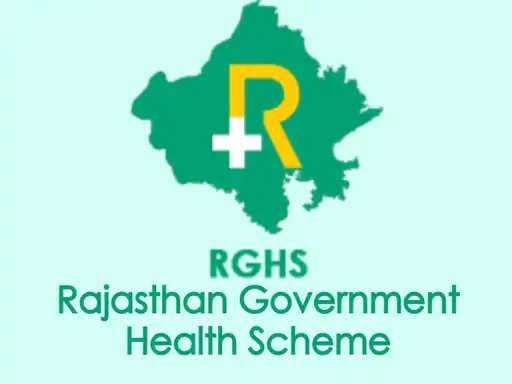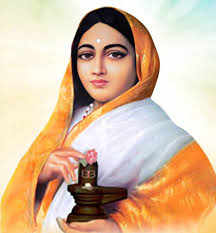Jaisalmer : The city of Bikaner, situated in the heart of the Thar Desert, was built in 1486 by Raja Rao Bhikhaji, the king of Marwar. The city has sand dunes. Bikaner retains medieval grandeur which is reflected in the lifestyle of the city. Bikaner was the most important trading city in Western and Central Asia. At that time the entire city was surrounded by walls. Five gates were built to enter the city. This city is also called the country of camels, it is known for the best riding camels in the world and hence it is one of the largest camel research and breeding farms in the world. The ship of the desert is an integral part of life here. Places to see in Bikaner: There are many places to see in Bikaner, some of which are as follows..
Junagarh Fort
Built in 1593 AD by Raja Rai Singh, one of the most revered generals in Emperor Akbar’s army, the fort is a formidable structure surrounded by a moat. The main entrance to the fort is Karan Pol which faces east. Next to it is Suraj Pol which means Sun Gate. The fort complex has some magnificent palaces like Anup Mahal, Ganga Niwas and Rang Mahal or the Palace of Bliss. Every temple is a majestic chapel for the royal family to worship their deities. Built in red sandstone and marble, these palaces form a picturesque cluster of courtyards, balconies, kiosks and windows scattered throughout the structure. The complex also houses a museum
Lalgarh Palace
This magnificent palace is an architectural masterpiece made of red sandstone, and was built in 1902 by Maharaja Ganga Singh in memory of his father Maharaja Lal Singh. Sir Swinton Jacob designed this oriental fantasy. The architecture is a blend of Rajput, Mughal and European architecture. The exterior contrasts dramatically with the oriental interiors and features. The palace has beautiful jaali work and filigree work, which are hallmarks of fine craftsmanship. The palace has an amazing collection of well-made paintings and hunting trophies. The sprawling lawns with blooming bougainvillea and dancing peacocks make for a spectacular sight.
Bhandeshwar Jain Temple
This is a fifteenth-century temple and is the oldest monument in Bikaner. The temple is decorated with splendid mirror work, frescoes and gold leaf paintings. Havelis are ancient mansions of the elite and wealthy. They are known for their lavish lifestyle and intricate carvings and craftsmanship as well as spacious courtyards. Bikaner is dotted with such havelis and notable among them are Kothari, Rampuria, Vaid and Daga. The suggested route to visit these havelis is via Gogagate, Dadon ka Chowk, Rangari Chowk, Assaniyon ka Chowk, Mohta Chowk, Binnaniyon ka Chowk, Daga Chowk, BK School and Jassusar Gate.
Ganga Government Museum
Popular as the best museum of the state, it displays a rich range of archaeological discoveries from prehistoric Harappan and early Gupta period. Paintings, arts and crafts, terracottas, pottery, carpets, coins and ancient Rajput weapons are on display in different sections.
Devi Kund
The royal crematorium has several magnificent mausoleums (chhatris). Each chhatri is dedicated to the memory of a ruler of the Bhikhaiji dynasty and is located at the exact spot where each of them was cremated. Maharaj Surat Singh’s chhatri is a fine example of architecture. The roofs of the chhatris display some delicate Rajput paintings.
Nearby attractions from Bikaner: The Camel Research Centre is just 10 kms from Bikaner. Spend a day with this indispensable ship of the desert at the Camel Research and Breeding Centre which is the only one of its kind in Asia. The farm is spread over 2000 acres of semi-arid land and is managed by the Government of India.
Deshnok
Deshnok is a small village located on Jodhpur Road, 32 km south of Bikaner city. It is connected by national highway and rail. It is the shrine of Karni Mata – believed to be an incarnation of Goddess Durga – who lived here in the fourteenth century and performed many miracles. Originally, the village was called ‘Das-Nok’ meaning ten corners because it was built by combining the ten corners of ten villages. The temple has a beautiful marble façade with solid silver doors built by Maharaja Ganga Singh. Across the doorway are more silver doors with panels depicting various legends of the Goddess. The image of the Goddess is installed in the inner sanctum.
Things to do in Bikaner: Don’t forget to enjoy camel ride amidst the vast desert of Bikaner.
Best time to visit Bikaner: The best season to visit Bikaner is from October to March.
How to go?
by plane
The nearest airport to Bikaner is Jodhpur, which is about 250 km away. It is a domestic airport that connects to the metropolitan cities of India and some other cities in the north.
by rail
The city has two railway stations, Bikaner Junction and Lalgarh Railway Station. This railway station is well connected to all the major cities of India.
by road
There are adequate bus services available from Bikaner to Delhi, Jodhpur, Agra, Ajmer, Ahmedabad, Jaipur, Jhunjhunu, Jaisalmer, Barmer, Udaipur and Kota.


